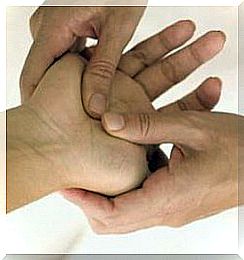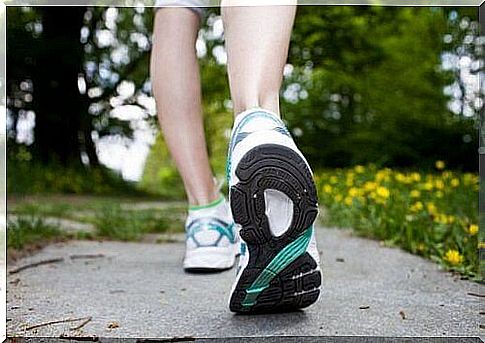What Happens When You Have Sleeping Hands And Feet?

There is no doubt that the tingling you feel in sleeping hands and feet is uncomfortable. When arms, hands, legs or feet “sleep”, it can be difficult to know what to do to bring them back to life.
Numbness and tingling: What is it? And why does it occur?
Both numbness and tingling are unpleasant feelings that can basically occur anywhere in the body. It is most often felt in the arms, legs, hands, fingers and feet. Some of the most common reasons for “sleeping” hands and feet and other limbs are:
- Been in the same position for too long – Either standing or sitting (for example while traveling, or when working at an office desk.)
- Nerve damage – If you damage a nerve in the neck, you will experience such feelings in the arms and hands; If it happens in the lower back, you will feel it in your legs and feet.

- Pressure on the spinal nerve or in the peripheral nervous system
- Shingles (herpes zoster)
- Lack of blood supply due to inflammation of the blood vessels, atherosclerosis, or blood clots
- Unbalanced levels of potassium, calcium or sodium
- B12 deficiency
- Intake of certain medications
- Nerve damage after alcohol abuse, and use of tobacco products; or lead poisoning
- Radiation therapy
- Insect bites, mites or animal bites
- Shellfish allergy
- Carpal tunnel syndrome (in the wrist)
- Diabetes
- Low metabolism (hypothyroidism)
- Stroke or drip
Women’s advice and help against tingling in sleeping hands and feet
Water is one of the best, and most natural, ways to wake up sleeping hands and feet. Soak the affected foot, or hand in a bowl of cold water for about 10 minutes, until the sensation subsides. Some people will prefer to move their fingers, toes or other parts of the body that are numb. Some other possibilities are:
Go
Take a short walk around the room as you begin to feel tingling or numbness. You may need to stand still for a few minutes if you feel twitches in your legs, but otherwise walking is an effective way to wake up your limbs – especially if you have been at rest for a while and now have sleeping hands and feet.

Stand on tiptoe
Another effective method of waking up sleeping bones. Stand on your toes as if you were a ballet dancer, and then lower your heels to the floor. Repeat 10 times to increase blood circulation in the lower extremities. If your legs and feet often fall asleep, do this exercise before going to bed, so you do not experience numbness while sleeping.
Eat foods high in iron
Iron deficiency can cause tingling in sleeping hands and feet. By adding lentils and beets to your diet, you can reduce the frequency of “seizures”. It is also good to eat more eggs, milk, nuts, beans and green leafy vegetables, such as spinach and beetroot.
Make a compress of chili pepper
This can also help. You need a dozen red chili peppers. Cook them on high heat, then press them through a cloth. Place the compress over the numb area. The heat from the chili will reduce pain and discomfort. If you often experience numb legs or arms, you can make a compress that you can warm up when you need it.
Avoid certain types of food and drink
A lot of coffee or alcohol after dinner is not recommended. Nor to eat heavy food late at night.
Live a healthier life
Stop smoking, get enough exercise, learn relaxation techniques such as yoga to reduce tension, avoid spending too much time in the same sitting or standing position, and wear loose-fitting clothing that provides better blood circulation.

Massage and change of position
When you feel it start to tingle, it may be a good idea to massage or rub the area. You can do this every night if you expect one of the limbs to fall asleep. Another good technique is to change posture often. If you are sitting – get up; if you are lying down – sit up; if you are standing – sit down; and so on. If you know that your legs and arms fall asleep while you sleep, it may be because you are in the same position for too long at a time. Place pillows under the limbs so that they lie high while you sleep.
Wear the right footwear
You should always wear socks made of cotton or wool that absorb moisture and prevent tingling. Change socks three times a day (every 8 hours). Your shoes should be comfortable and made of leather or fabric. Make sure that they provide enough support for the heel arch, and use insoles if necessary. Try not to wear too high heels or shoes that slip when walking. Make sure the shoes have good soles.
Exercises against the wall or with the ball
When you come home from work, especially if you experience tingling, or if your legs are asleep; take off socks and shoes and stand up with your back against the wall. Press your fingers and palms against the wall and bend your knees gently. Take a rubber ball up against the wall and bend your knees gently, pushing as hard as you can. There is equipment adapted to this particular exercise. You can do the same exercises for your legs and feet by pushing the rubber ball against the ground using the underside of your feet.









